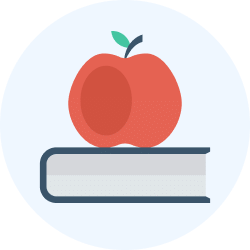Class 2 Exam > Class 2 Questions > Are there any practical activities or hands-o...
Start Learning for Free
Are there any practical activities or hands-on exercises in CBSE Class 2 Mathematics?
Most Upvoted Answer
Are there any practical activities or hands-on exercises in CBSE Class...
Yes, there are several practical activities and hands-on exercises in CBSE Class 2 Mathematics. These activities are designed to engage students actively in the learning process and help them understand mathematical concepts in a concrete and practical way.
1. Counting and Number Recognition:
- Counting objects: Students can engage in activities where they count objects such as buttons, blocks, or candies, and write down the corresponding numbers.
- Number recognition: Activities can be designed where students identify and match numbers with objects or pictures.
2. Addition and Subtraction:
- Number line: Students can use a number line to practice addition and subtraction by moving forward or backward to represent the operations.
- Manipulatives: Using objects like buttons or blocks, students can physically add or remove them to understand the concepts of addition and subtraction.
3. Measurement:
- Measuring length: Students can use a ruler or measuring tape to measure the length of objects in their surroundings, such as books or pencils.
- Measuring weight: Students can use a balance scale to compare the weight of different objects, such as fruits or toys.
4. Shapes and Patterns:
- Shape recognition: Students can identify and classify various shapes by sorting objects or drawing them.
- Pattern recognition: Students can create and extend patterns using objects or drawings, such as AB, ABB, or ABC patterns.
5. Money:
- Role-play: Students can engage in role-play activities, such as playing as a shopkeeper or customer, to practice counting and exchanging money.
- Counting coins: Students can practice counting different denominations of coins by physically handling them.
6. Time:
- Clock activities: Students can use a clock or a toy watch to practice reading and setting time, both analog and digital.
- Daily routine: Students can create a schedule or timeline of their daily activities to understand the concept of time.
These hands-on activities and exercises not only make learning mathematics enjoyable but also enhance students' understanding of the subject by providing real-life contexts and practical applications.
1. Counting and Number Recognition:
- Counting objects: Students can engage in activities where they count objects such as buttons, blocks, or candies, and write down the corresponding numbers.
- Number recognition: Activities can be designed where students identify and match numbers with objects or pictures.
2. Addition and Subtraction:
- Number line: Students can use a number line to practice addition and subtraction by moving forward or backward to represent the operations.
- Manipulatives: Using objects like buttons or blocks, students can physically add or remove them to understand the concepts of addition and subtraction.
3. Measurement:
- Measuring length: Students can use a ruler or measuring tape to measure the length of objects in their surroundings, such as books or pencils.
- Measuring weight: Students can use a balance scale to compare the weight of different objects, such as fruits or toys.
4. Shapes and Patterns:
- Shape recognition: Students can identify and classify various shapes by sorting objects or drawing them.
- Pattern recognition: Students can create and extend patterns using objects or drawings, such as AB, ABB, or ABC patterns.
5. Money:
- Role-play: Students can engage in role-play activities, such as playing as a shopkeeper or customer, to practice counting and exchanging money.
- Counting coins: Students can practice counting different denominations of coins by physically handling them.
6. Time:
- Clock activities: Students can use a clock or a toy watch to practice reading and setting time, both analog and digital.
- Daily routine: Students can create a schedule or timeline of their daily activities to understand the concept of time.
These hands-on activities and exercises not only make learning mathematics enjoyable but also enhance students' understanding of the subject by providing real-life contexts and practical applications.

|
Explore Courses for Class 2 exam
|

|
Question Description
Are there any practical activities or hands-on exercises in CBSE Class 2 Mathematics? for Class 2 2025 is part of Class 2 preparation. The Question and answers have been prepared according to the Class 2 exam syllabus. Information about Are there any practical activities or hands-on exercises in CBSE Class 2 Mathematics? covers all topics & solutions for Class 2 2025 Exam. Find important definitions, questions, meanings, examples, exercises and tests below for Are there any practical activities or hands-on exercises in CBSE Class 2 Mathematics?.
Are there any practical activities or hands-on exercises in CBSE Class 2 Mathematics? for Class 2 2025 is part of Class 2 preparation. The Question and answers have been prepared according to the Class 2 exam syllabus. Information about Are there any practical activities or hands-on exercises in CBSE Class 2 Mathematics? covers all topics & solutions for Class 2 2025 Exam. Find important definitions, questions, meanings, examples, exercises and tests below for Are there any practical activities or hands-on exercises in CBSE Class 2 Mathematics?.
Solutions for Are there any practical activities or hands-on exercises in CBSE Class 2 Mathematics? in English & in Hindi are available as part of our courses for Class 2.
Download more important topics, notes, lectures and mock test series for Class 2 Exam by signing up for free.
Here you can find the meaning of Are there any practical activities or hands-on exercises in CBSE Class 2 Mathematics? defined & explained in the simplest way possible. Besides giving the explanation of
Are there any practical activities or hands-on exercises in CBSE Class 2 Mathematics?, a detailed solution for Are there any practical activities or hands-on exercises in CBSE Class 2 Mathematics? has been provided alongside types of Are there any practical activities or hands-on exercises in CBSE Class 2 Mathematics? theory, EduRev gives you an
ample number of questions to practice Are there any practical activities or hands-on exercises in CBSE Class 2 Mathematics? tests, examples and also practice Class 2 tests.

|
Explore Courses for Class 2 exam
|

|
Signup for Free!
Signup to see your scores go up within 7 days! Learn & Practice with 1000+ FREE Notes, Videos & Tests.























